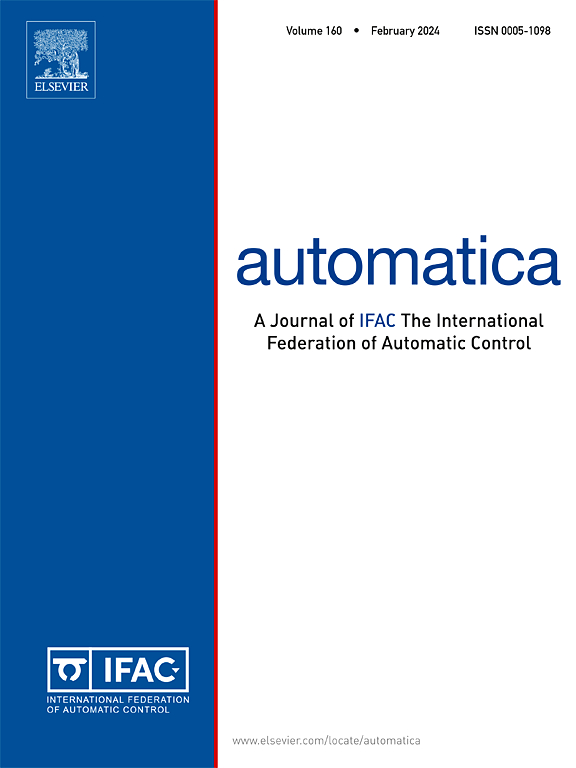线性系统的系统区间观测器设计
IF 4.8
2区 计算机科学
Q1 AUTOMATION & CONTROL SYSTEMS
引用次数: 0
摘要
我们首先在初始条件和不确定性的可观察性和区间界的标准假设下,对线性时不变(LTI)系统进行了系统和全面的区间观测器设计。传统上,这样的设计依赖于特定的转换到梅茨勒(连续时间)或非负(离散时间)形式,这可能会施加限制。我们证明,这些可以被LTI转换有效地取代,这种转换可以直接离线计算。随后,我们将框架扩展到时变系统,克服了无法提供保证的传统方法的局限性。该方法利用对高维目标系统的动态变换,可以构造区间观测器。这些变换在有限时间后成为左可逆的,前提是系统是可观察的,并且目标动力学足够高维和快速,从而能够在有限时间内恢复原始坐标中的区间界限。提供了学术实例来说明所提出的方法。本文章由计算机程序翻译,如有差异,请以英文原文为准。
Systematic interval observer design for linear systems
We first develop systematic and comprehensive interval observer designs for linear time-invariant (LTI) systems, under standard assumptions of observability and interval bounds on the initial condition and uncertainties. Traditionally, such designs rely on specific transformations into Metzler (in continuous time) or non-negative (in discrete time) forms, which may impose limitations. We demonstrate that these can be effectively replaced by an LTI transformation that is straightforward to compute offline. Subsequently, we extend the framework to time-varying systems, overcoming the limitations of conventional approaches that offer no guarantees. Our method utilizes dynamic transformations into higher-dimensional target systems, for which interval observers can always be constructed. These transformations become left-invertible after a finite time, provided the system is observable and the target dynamics are sufficiently high-dimensional and fast, thereby enabling the finite-time recovery of interval bounds in the original coordinates. Academic examples are provided to illustrate the proposed methodology.
求助全文
通过发布文献求助,成功后即可免费获取论文全文。
去求助
来源期刊

Automatica
工程技术-工程:电子与电气
CiteScore
10.70
自引率
7.80%
发文量
617
审稿时长
5 months
期刊介绍:
Automatica is a leading archival publication in the field of systems and control. The field encompasses today a broad set of areas and topics, and is thriving not only within itself but also in terms of its impact on other fields, such as communications, computers, biology, energy and economics. Since its inception in 1963, Automatica has kept abreast with the evolution of the field over the years, and has emerged as a leading publication driving the trends in the field.
After being founded in 1963, Automatica became a journal of the International Federation of Automatic Control (IFAC) in 1969. It features a characteristic blend of theoretical and applied papers of archival, lasting value, reporting cutting edge research results by authors across the globe. It features articles in distinct categories, including regular, brief and survey papers, technical communiqués, correspondence items, as well as reviews on published books of interest to the readership. It occasionally publishes special issues on emerging new topics or established mature topics of interest to a broad audience.
Automatica solicits original high-quality contributions in all the categories listed above, and in all areas of systems and control interpreted in a broad sense and evolving constantly. They may be submitted directly to a subject editor or to the Editor-in-Chief if not sure about the subject area. Editorial procedures in place assure careful, fair, and prompt handling of all submitted articles. Accepted papers appear in the journal in the shortest time feasible given production time constraints.
 求助内容:
求助内容: 应助结果提醒方式:
应助结果提醒方式:


